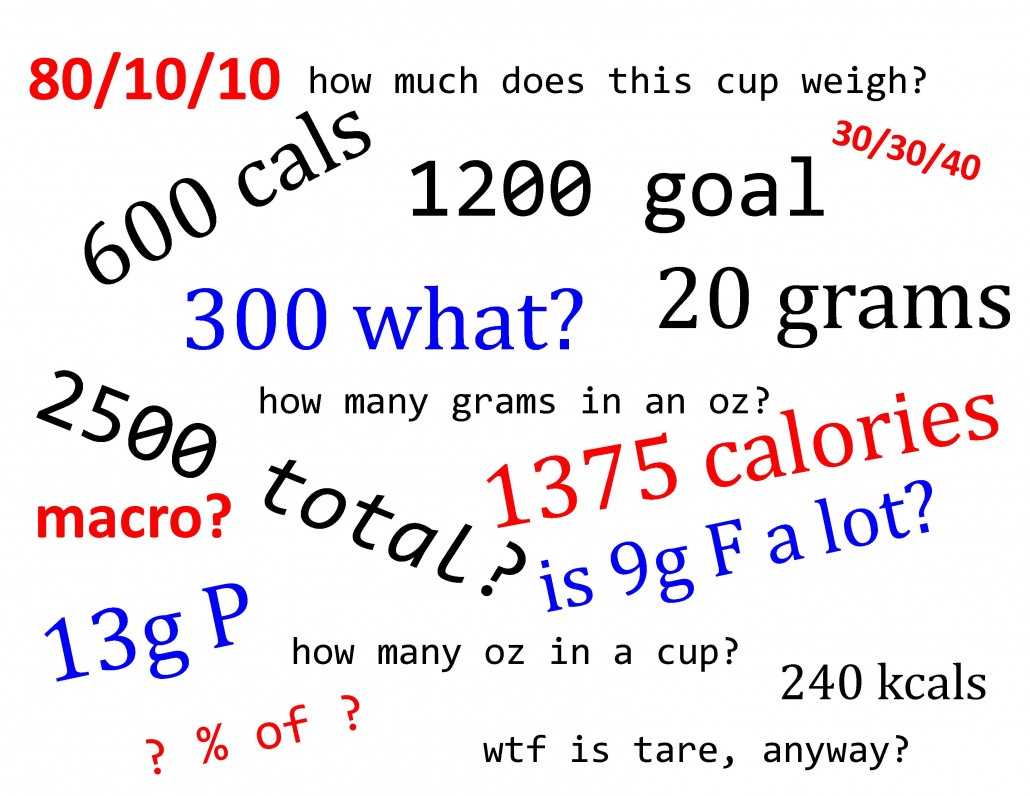Today, more than ever, we are obsessed with calories. The calorie content of a food is one of the first things most of us look at on a food label. This idea has been so deeply ingrained in us as the government, media, and mainstream diet programs profess the almighty calorie as the most critical part of our diet to monitor, and therefore the focal point of weight loss and better health.
I’ve heard people say, “eggs, chicken, pasta, cereal, pizza, cake, broccoli, chips or candy it doesn’t matter what you eat, just how much you eat – moderation is key.” This “calorie confusion” is one of the most pervasive and most damaging pieces of nutrition information still haunting us today.
Although calories have been the mainstay of conventional dietary advice for the last 50 years, are they really as important as we’ve been lead to believe? To answer this, I believe we first must understand what a calorie actually is.
In 1824, Nicolas Clement, a French physicist, was the first man known to define and utilize a Calorie as a unit of heat, originally intended to measure steam engine efficiency. (1)
It wasn’t until the turn of the 20th century that this measure was adopted by the U.S. as a way to measure the amount of energy in food. Shortly thereafter, the USDA provided the first food database to be used in dietetics and the calorie was adopted for the nutrition facts panels on U.S. food labels. Since then, calories have become the staple in terms of measuring the energy in food.
The way nutrition scientists measure calories in a specific food is by burning the food in a bomb calorimeter, which is basically a two chambered box, one inside of the other. The scientist first weighs a sample of a particular food. The sample is then put on a dish and placed inside the inner-chamber of the calorimeter. They then fill the inner-chamber with oxygen and seal it so the oxygen can’t escape.
The outer-chamber is then filled with a measured amount of cold water and the oxygen in the inner-chamber is then ignited. When the food burns, the heat causes a rise in the outer-chamber’s water temperature. Each degree (per kilogram) the water rises represents one food calorie.
Example: 200 degree rise = 200 calories
Although this seems very scientific by nature and completely understandable on paper, the question is, what is the scientific relevance of burning food in a sealed chamber in relationship to the bodily processes involved in digesting food?
NOT MUCH…
Although most of us rely on counting calories for weight loss, calories aren’t particularly accurate (or even that scientific) when it comes to our biological processes. Simply counting calories doesn’t take into account how the body processes the three different energy dense macronutrients of food (protein, carbohydrates, and fat). Each one of these macronutrients is processed very differently in the body. For instance, if you were to eat 500 calories of bread, it would have a very different reaction in the body than 500 calories of salmon.
The human body is a highly complex biochemical system with many elaborate processes that regulate our energy balance. You see, different foods travel different pathways and have vastly different effects on our metabolisms. But, equally as important, is the fact that different foods and macronutrients have very different effects on the hormones that govern when, what, and how much we eat.
So, scientifically speaking, while it may be true that all calories have the same amount of energy (one food calorie contains 4,184 Joules of energy), and in that respect, a calorie is a calorie. However, things aren’t quite that simple when it comes to how our bodies process them. (2, 3)
Let’s look at some strong, evidence-based examples that prove why a calorie is not just a calorie.
The Thermic Effect of Food
The Thermic Effect of Food (TEF), also known as Specific Dynamic Action of food (SDA) or Dietary Induced Thermogenesis (DIT), is the amount of energy expenditure above the resting metabolic rate due to the cost of processing food for use and storage. Basically, this is the amount of caloric energy our bodies use when digesting different foods. (4)
The thermic effect is a measure of the amount of energy the body uses to break-down a food into its usable nutrients
Different foods travel different metabolic pathways, some of which are more efficient than others. The less efficient a metabolic pathway is the less likely this food will be turned into body fat, which seems counterintuitive, but it actually makes sense. For instance, the metabolic pathways for protein are less efficient than the metabolic pathways for carbohydrates and fat. For this reason, a larger portion of protein calories are lost as heat when it is metabolized by the body. (5, 6)
The thermic effect of our different energy dense macronutrients varies:
- Fat: 2-3%
- Carbs: 6-8%
- Protein: 25-30%
There are slight deviations on the exact thermic effect, but it is undisputed that protein requires much more energy to metabolize than carbohydrates and fat. (7)
So, if we go with an acceptable lower limit of 25 percent for protein and 6 percent for carbohydrates, this would mean that 100 calories of protein would end up being 75 calories to our body, while 100 calories of carbohydrates would end up being 94 calories. That’s quite a difference, and completely proves why a calorie is NOT a calorie! Very different “calories in” provide very different effects. Therefore, you can consume more calories from protein rich foods like chicken and steak than you can from carbohydrate rich foods like bread and pasta without the likelihood of gaining weight or body fat. And, these good for you foods help you to feel fuller, longer.
The Satiety Value of Food
It is well documented that different food types have very different effects on our satiety level. For this reason it makes it much easier to overindulge on certain foods and not on others. (8)
The satiety value is a measure of how quick and how long a food gives the body a sense of fullness
For example, it may be quite easy to eat 500 calories of cake, but it would be quite difficult to force yourself to eat 500 calories of broccoli. Would you feel full after 500 calories of cake? Probably not. You haven’t been “satiated,” or made to feel full. A food’s “satiety” is its ability to reduce hunger, increase feelings of fullness, and reduce energy intake as measured by the “satiety index.” (9, 10)
There are many factors that determine the satiety value of different foods. If you are choosing many of your foods low on the satiety index, then you will experience being hungry more often and end up eating more. On the other hand, if you choose foods that are high on the satiety index, you will end up eating less while staying satisfied longer. This will help you control cravings and urges much more easily.
So clearly, whether or not you’re choosing highly satiating foods will have a major impact on your energy balance over the long term. Obviously, calories from a highly satiating food like eggs, chicken and fish are not the same as the calories from a low satiating food like white bread, pizza and cookies.
The Glycemic Response of Food
There are many conflicting views among the nutrition experts, but one of the few things that almost everyone has come to terms with these days is that refined carbohydrates are bad. This includes added sugars like sucrose and high fructose corn syrup, as well as refined grain products.
Refined carbohydrates tend to be very low in fiber, which makes them susceptible to rapid digestion and quick absorption, leading to rapid spikes in blood sugar. They have a high glycemic index rating (GI), which is a measure of how quickly a food raises one’s blood sugar.
The glycemic response is the measure of how quick a food enters the bloodstream and raises blood sugar levels
When we eat a food that rapidly spikes blood sugar, it tends to lead to a crash in blood sugar a few hours later. This is referred to as “the crash” or “blood sugar roller coaster.” When blood sugar crashes, we get tired, sluggish, and irritable, and we crave high glycemic foods. (11, 12)
Essentially, what this tells us is that the speed at which carbohydrate calories enter the system can have a dramatic effect on their potential to cause overeating and weight gain. So, if you tend to eat a higher carbohydrate diet, it is crucial to choose whole, unprocessed carbohydrate sources that contain plenty of fiber. The fiber will actually reduce the rate at which the glucose enters your system. (13, 14)
People who tend to eat higher glycemic index foods are at a far greater risk of becoming over-weight, obese, and of developing other metabolic issues like Type II Diabetes and Cardiovascular Disease.
So, as you can see, different calorie sources can have vastly different effects on our hormones, satiety level, energy expenditure, and the brain-stomach connection that controls food intake. It’s time to get off of the “calorie is just a calorie” mantra that we’ve held onto for so long and grasp a new way of thinking – consuming the right calories for a happy, healthy, and balanced body.


